As installed at the 18th Street Arts Center in Santa Monica California, the Brazilian artist Clarissa Tossin’s work, titled 21st Century Wisdom: Healing Frank Lloyd Wright’s Textile Block Houses, appears like an unconventional archaeological display. 3D-printed replicas of Maya figurines are perched on stepped piles of generic construction blocks; arranged in three irregular masses that sprawl over the gallery floor, these grey concrete pedestals are far removed from the typically protective, reverential display of ancient artifacts. Instead, the fourteen faux-ceramics balanced upright on top of them are exposed, as if they had just been put down and could be picked up again at any time.
Clarissa Tossin, 21st Century Wisdom: Healing Frank Lloyd Wright’s Textile Block Houses (2019)
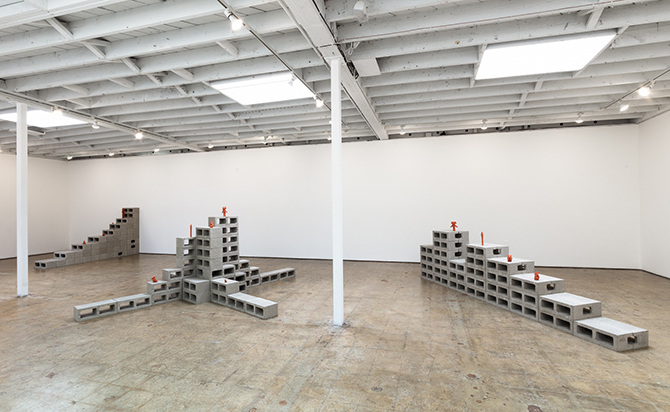
Fig. 1. Clarissa Tossin, Installation view of 21st Century Architecture: Healing Frank Lloyd Wright’s Textile Block Houses (2019). 18th Street Arts Center – Santa Monica, CA. [Link to source]
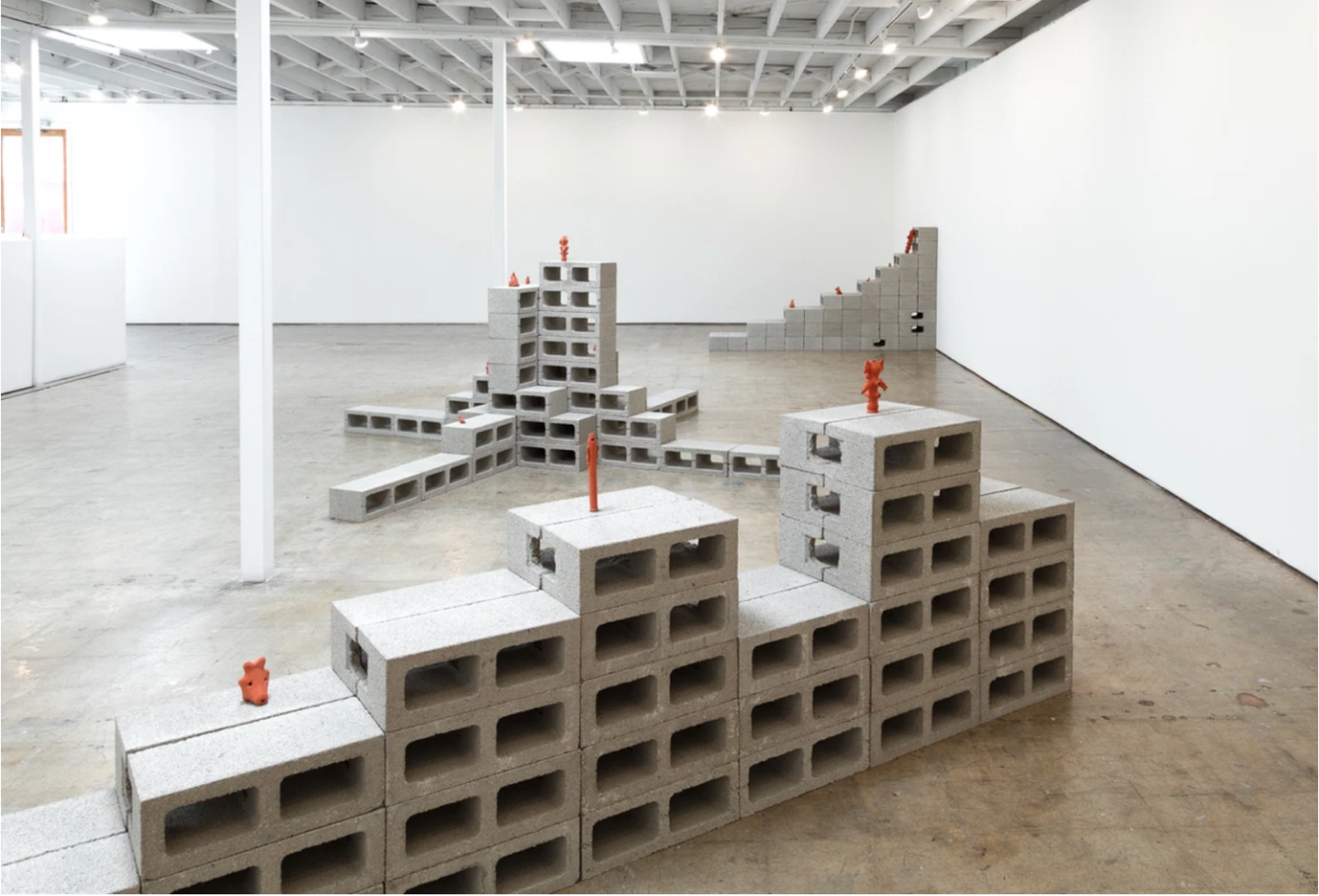
Fig. 2. Clarissa Tossin, Installation view of 21st Century Architecture: Healing Frank Lloyd Wright’s Textile Block Houses (2019). 18th Street Arts Center – Santa Monica, CA. [Link to source]
Tossin consciously signals the relatively cheap facture of these simulacra: their bright terracotta red color, though emulating the red clay paste typically used by the Maya, is bright and artificial; seen from up close, they have the familiar dull sheen of plastic; and some figurines repeat multiple times. With this gesture, Tossin conceptually undermines the fetishization of the ancient artifact in modern museums and markets as unique and of high cultural (and monetary) value. At the same time, their being copies permitted their handling: all visitors to the gallery were encouraged to pick up and play (with) objects that are all, in fact, musical instruments. Produced in collaboration with Jared Katz, Tossin’s small figurines replicate not only the forms but the pitches of ancient Maya aerophones. Some are more legible as such than others, the display of vertical flutes with obvious finger holes alongside apparently simple sculptures inviting exploration and play. By allowing handling, Tossin opened her installation to rich, multisensory experience, activating the perception of sound and a childlike urge to touch.
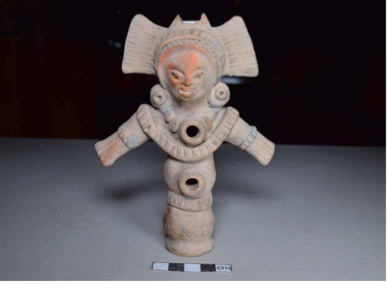
Fig. 3. Maker unknown (Maya, 250-900CE). Globular flute. Museo VICAL. Photograph by Jared Katz. Reproduced from Katz, “Gentle Flutes and Blaring Horns: An Analysis of Ancient Maya Music and Musical Instruments in Daily and Ceremonial Activities” (PhD diss., University of California Riverside, 2018), 102.
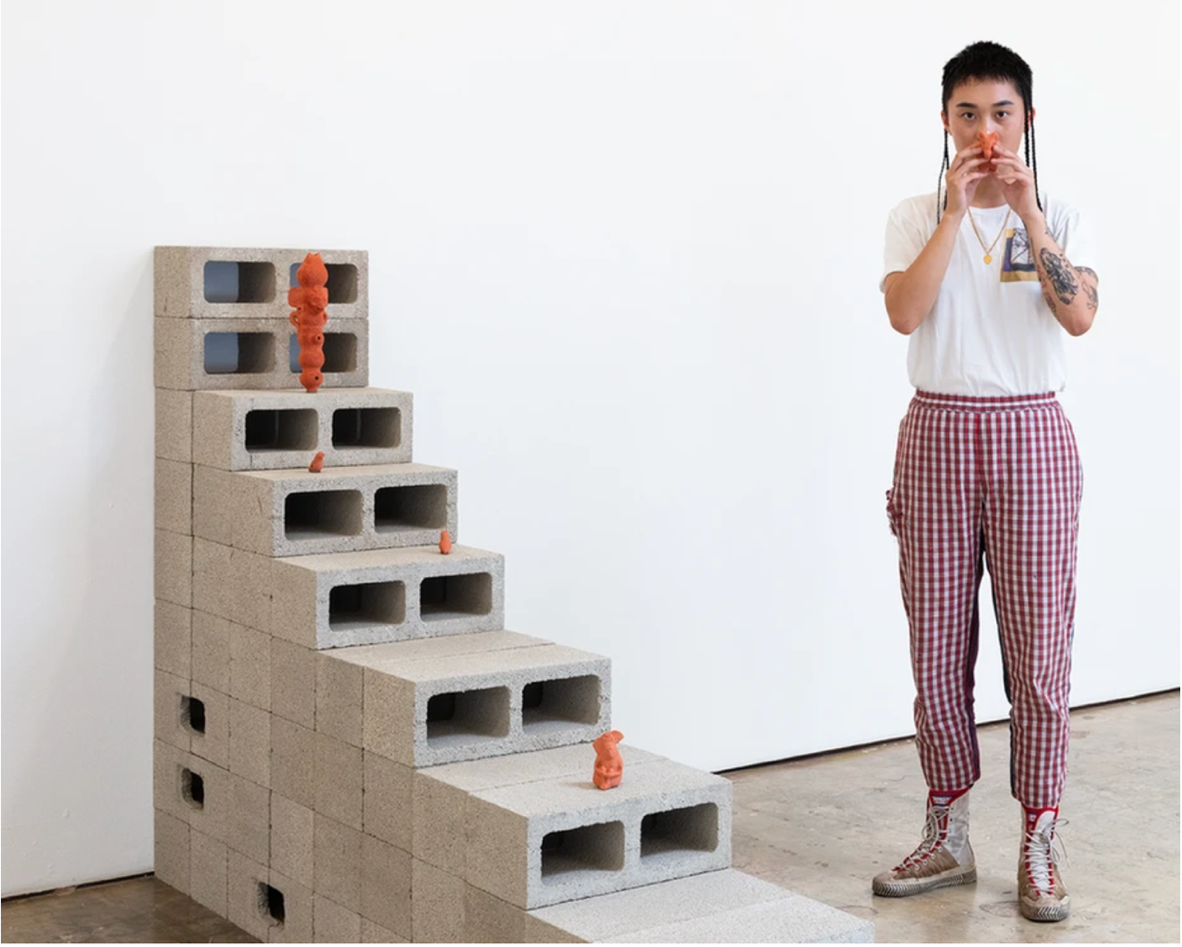
Fig. 4. Clarissa Tossin, Installation view of 21st Century Architecture: Healing Frank Lloyd Wright’s Textile Block Houses (2019). 18th Street Arts Center – Santa Monica, CA. [Link to source]
By contrast, the underlying hard-edged concrete structures read as imposing and anonymous. Their homogeneity and “material coolness” establishes a binary juxtaposition between them and the vividly colored and handheld-sized plastic figurines.1 The concrete block, as signaled by the titular reference to the modernist architect Frank Lloyd Wright, is supremely emblematic of rectilinearity and modular mass production. In his Textile Block houses, for instance, Wright built characteristically planar façades with regularly sized concrete blocks. Believing the material to be “the cheapest (and ugliest) thing in the material world,” Wright innovated a method of pouring concrete into molds to embellish it with a rich, brocade-like surface.2
Despite differences in scale and materiality, Tossin’s small figurines similarly engage with contexts of mass production. On one hand, these 3D-printed simulacra demonstrate the potential for cutting-edge technological innovation to improve scholarly and public access to archaeological finds.3 On the other hand, they make explicit reference to the mass production of ceramic figurines in the Late Classic Maya period (600-900 CE). In all instances, Tossin replicated figurines that had been molded into shape, a fast and serial mode of production that permitted wide circulation and quotidian use.4 Recalling Wright’s use of molds as a means to beautify inexpensive concrete blocks, Tossin prioritizes examples of this common, even ubiquitous, type of ceramic production over more canonical works. Through material juxtaposition, therefore, this installation traces a trans-cultural history of mass production as a democratic ideal.
Insisting on archaeological accuracy, Tossin’s critique of Wright is instead directed towards his use of diverse, often invented, pre-Columbian sources. Wright’s Ennis House, for instance, is designed with its lateral walls at a slight gradient in a loose citation of the negative batter distinctive of Mayan temples (broadly defined). For a panel hung above an interior fireplace, however, Wright commissioned an image of the fire deity Xiuhtecutli; although rendered with sufficient iconographic to be legible as such (and identified as “authentically of Mayan derivation” by architectural historian Marjorie Ingle), this deity was Aztec.5 This ahistorical syncretism was entirely consistent with the Mayan Revival style contemporaneously popular in the United States. As Wright himself explained, the eclecticism of his sources was not a lapse but a deliberately constructed amalgam of evocatively ancient and exotic unknowns: “To many it was all Egyptian. Maya to some, very Japanese to others. But strange to all. It awakened a sense of mystery and romance to the beholder.”6
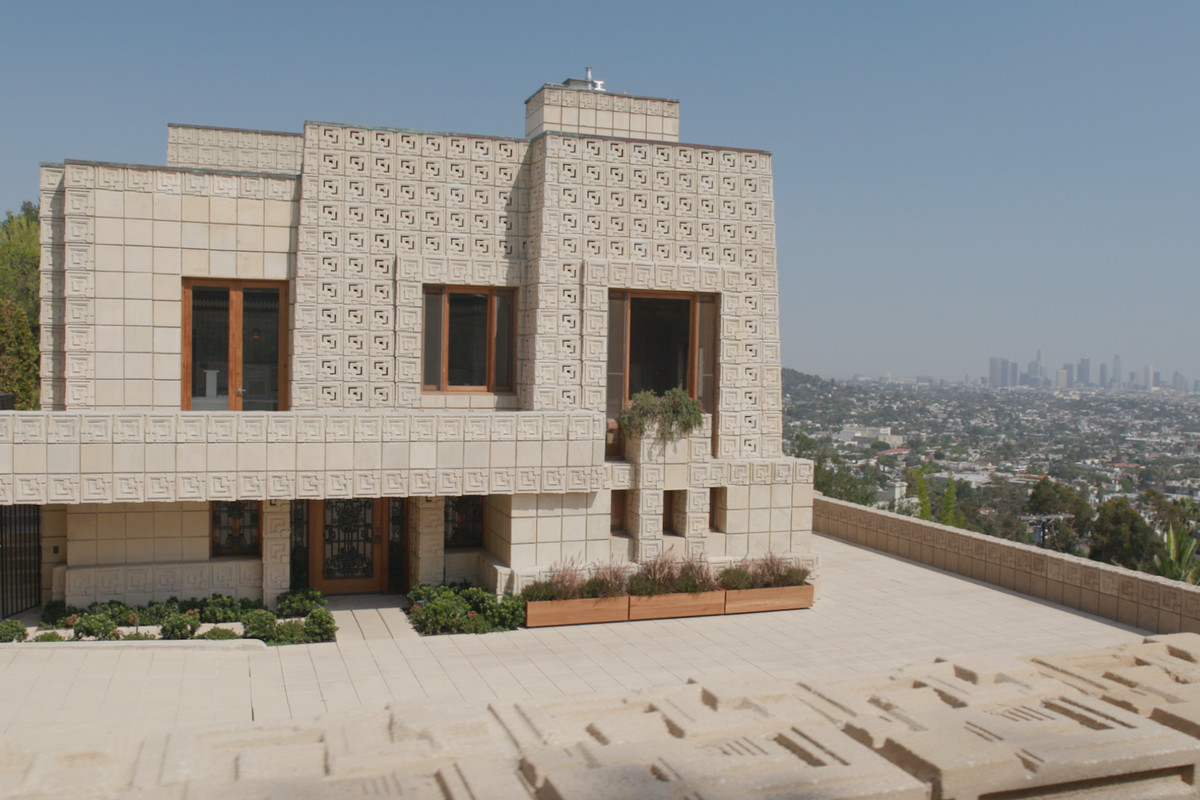
Fig. 5. Frank Lloyd Wright, Ennis House (1924). Photograph by KCET. [Link to source]
The mass appeal that he envisioned for his modular textile architecture was thus heavily dependent on ‘Mayan’ referents with cultural and historical as well as aesthetic value.7 This architectural innovation was almost exactly contemporaneous with popular design books, such as George Oakley Totten’s Maya Architecture of 1925, that translated photographs of archaeological sites at Chichén Itzá and Uxmal into two-dimensional, truncated designs appropriate for walls and moldings. Motivated by commercial interest and underpinned by neocolonial reductivism, material culture was aestheticized and fragmented into consumable parts for display; the same is true of Wright’s ahistorical eclecticism.
With her modular concrete constructions, Tossin evokes the materiality and irregular massing of Wright’s Textile Houses but empties them of surface ornamentation. As if stripped bare, the nostalgic romanticism of the Mayan Revival is hollowed out and concrete is returned to its essentials. Likewise, Tossin inverts Wright’s relation to the pre-Columbian past. The small red figurines displayed across the installation are not fragmented and flattened into decorative patterns but retain their three-dimensional objecthood. Nor are these post-Columbian artifacts subsumed into the totalizing aesthetic programs, or gesamtkunstwerk, as they were in Wright’s architecture. Instead, Tossin’s plastic figurines gesture to the ancient past with archaeological precision rather than neoromantic evocation. Freely manipulable but unmistakably fake, they propose an alternative model for contemporary engagement with the pre-Columbian, one that acknowledges its irrevocable pastness but that utilizes advanced technology to revive it in the present, not only as mere image, but as objects with use. 3D printing mass-produced ceramics updates a pre-modern system of production without sacrificing form or meaning, and further permits their sonic activation.
Sound and music are thus of particular significance to Tossin’s post-Columbian project. The combination of image and instrument in Maya figurine-whistles has been associated with an embodied form of animation activated by blowing air into their bodies.8 Often found alongside ritual and sacrificial objects, and speaking to a synesthetic conceptual relation between wind, music and sweet fragrances, musical instruments and particularly aerophones have thus been interpreted as “an essential means of conjuring gods.”9 Tossin’s titular reference to healing, however, points to an additional layer of meaning in Maya music. Ceramic flutes, whistles and ocarinas have been found with greater frequency and in more diverse locations, including especially domestic complexes, than other nonperishable musical instruments, and yet are excluded from iconographic representations of musicians in official settings.10 This has widely been interpreted as indicating that music featured in Maya daily life, not only in its ritual or ceremonial modality, but for entertainment, play and community, especially among social groups that occupied a lesser or marginalized position.11 That there are no iconographic depictions of professional (male) musicians playing ceramic ocarinas but that they recur in spaces related to food preparation and textile manufacture, as well as in burials of women, points to Maya music as a gendered reality.12 Looking to a later period in the Mexican highlands but to a comparable context of ceramic production, Lisa Overholtzer has posited that the ubiquity of miniaturized figural representations was significant as “a reminder of the importance of women in the production and reproduction of… society.”13 The potentially physiological effects of sound as used by midwives during childbirth further suggests these figurines to have been instruments of healing.14
Tossin engages, therefore, with multiple mutually inflecting histories of mass production and pre-Columbian imagery. Looking to ancient Maya ceramics, Frank Lloyd Wright’s Mayan Revival style and recent technological advances in archaeology, she draws a throughline in their common commitment to broad accessibility. But repudiating early-twentieth-century models of superficial appropriation, Tossin proposes a post-Columbian model rooted in sound as a form of engaging the body and reactivating epistemologies neglected as much by the Maya elite as modern western High Art. Wright’s architecture isn’t discarded or dismissed but is instead emptied of false representation; brought into a new century, it is transformed into a mere stand for a true Mayan revival.
-----------------------------------------------------------------------------
1. Jennifer Remenchik, “Clarissa Tossin at the 18th Street Arts Center,” Contemporary Art Review (March 13, 2019): https://contemporaryartreview.la/clarissa-tossin-at-18th-street-arts-center/.↩
2. Frank Lloyd Wright, An Autobiography (New York: Duell, Sloan and Pearce, 1943), 235.↩
3. Jared Katz, “Digitised Maya Music,” Digital Applications in Archaeology and Cultural Heritage 6 (2017), 33.↩
4. Christina T. Halperin, Maya Figurines: Intersections between State and Household (Austin: University of Texas Press, 2014), 3-11.↩
5. Marjorie Ingle, The Mayan Revival Style: Art Deco Mayan Fantasy (Salt Lake City: Peregrine Smith Books, 1984), 17.↩
6. Wright, An Autobiography, 191.↩
7. Ibid., 235.↩
8. Halperin, Maya Figurines, 203.↩
9. Karl Taube, “Flower Mountain: Concepts of Life, Beauty and Paradise among the Classic Maya,” RES: Anthropology and Aesthetics 45 (Spring 2004), 78.↩
10. Halperin, Maya Figurines, 190-192, 205.↩
11. Halperin, Maya Figurines, and Jared Katz, “Gentle Flutes and Blaring Horns: An Analysis of Ancient Maya Music and Musical Instruments in Daily and Ceremonial Activities” (PhD diss., University of California Riverside, 2018).↩
12. Matthias Stöckli, “Playing Music as a Domestic Activity? Interpretations of the Finds of Sound-producing Artifacts at Aguateca, El Peten, Guatemala,” The World of Music 49, no. 2 (2007): 17-33.↩
13. Lisa Overholtzter, “So That the Baby Not Be Formed Like a Pottery Rattle: Aztec Rattle Figurines and Household Social Reproductive Practices,” Ancient Mesoamerica 23, no. 1 (Spring 2012), 79.↩
14. Ibid., 70.↩
